If you’re getting ready to take some important eye measurements, we know you’re eager to get it right. After all, accuracy is paramount when it comes to tonometry, the process by which eye pressure is measured. You’re not just taking a measurement; you’re gathering crucial information that can help assess the risks of a significant health issue – glaucoma. But don’t worry, we’ve got your back. We’re here to help you choose the right accessories for accurate tonometer measurements.
“The difference between good and great is attention to detail.”
In this guide, we’ll explore a number of key accessories for a tonometer and make sure you grasp how each can influence the success of your measurements. So, let’s dive in and ensure that you’re equipped with all the necessary information.
Getting the most out of your tonometer requires choosing the right accessories and ensuring that the device is properly maintained and calibrated. These instruments measure the pressure of fluid within the eye, helping to identify glaucoma and other potential eye health issues. But, if the tonometer isn’t used with the proper accessories or isn’t maintained correctly, its accuracy may be compromised. Let’s delve into this a bit further!
Various handheld tonometers, such as the Tono-Pen XL, Tono-Pen Avia, and iCare devices, come equipped with single-use tip covers and disposable probe tips. This isn’t merely a convenience feature. These disposable accessories are critical for minimizing cross-contamination and preventing the transmission of infectious diseases. Automated Ophthalmics, as well as other reputable brands, supply latex tip covers for tonometers, including the record-holding Reichert Tono-Pen. Ensure you’re using these protective measures with each patient to maintain the hygiene and accuracy of the device.
Equally crucial to tonometer accuracy is proper calibration. You’re probably familiar with the Goldmann Applanation Tonometer, one of the most revered devices in this field. Part of what makes devices like this trustworthy is their regular, diligent calibration. Whether you’re using a Goldmann tonometer or another model, it’s a good practice to recalibrate your handheld tonometer daily before office hours. Regular recalibration is fundamental to maintain accurate intraocular pressure (IOP) monitoring–– this is particularly essential for managing patients at risk for or with ongoing glaucoma treatment.
If you find yourself with limited resources to maintain this level of device upkeep, don’t fret. Many hospitals and clinics have medical engineering teams that offer in-house recalibration services. Contracting these services can help ensure your tonometer measurements remain both accurate and precise, providing optimal patient care.
So whether it’s being diligent about using the right disposable covers for each measurement, ensuring your tonometer is regularly calibrated, or engaging professional recalibration services when needed, remember: the right accessories and maintenance procedures can make all the difference in your tonometer measurements.
Selecting the appropriate accessories for your tonometer is imperative to attaining precise measurements. A well-calibrated and adequately maintained tonometer can effectively measure the intraocular pressure, an essential factor integral to diagnosing conditions such as glaucoma.
Many handheld devices such as Tono-Pen XL, Tono-Pen Avia, and iCare devices are designed with disposable probe tips and single-use tip covers. Following accurate usage of these accessories can help essentially minimize cross-contamination and transmission of infectious diseases. Another remarkable aspect is Automated Ophthalmics, a notable provider of latex tip covers fitting diverse tonometers, including the Reichert Tono-Pen.
Concerning the popular Goldmann tonometers, these are often recalibrated in-house by the hospital’s medical engineering team. Regular maintenance ensures that the tool performs optimally, adhering to the manufacturer’s standards, and providing dependable measurements.
It’s important to note that calibration checks with handheld tonometers might be needed daily before the beginning of office hours. Moreover, it’s worthwhile to consider that calibrations may also be required before the day’s first use and as the instrument display indicates.
Remember, using the right accessories, maintaining a reliable calibration schedule, and replacing consumable parts in your tonometer should be an important part of your daily procedure. With these important considerations in mind, you can trust that your tonometer measurements will be as accurate as possible, helping provide the best care for your patients.
Selecting the right accessories for your tonometer significantly affects the accuracy of your readings. All tonometers, whether handheld like the Tono-Pen XL, Tono-Pen Avia, or iCare devices, or non-handheld like the Goldmann applanation tonometer, require specific accessories for optimal performance and hygiene. For instance, consider disposable probe tips and single-use tip covers – these minimize risk of cross-contamination and transmission of infectious diseases.
Every tonometer model and type has its own unique accessory requirements. Therefore, you should consult your device manual or the manufacturer’s instructions to understand what specific accessories you will need for your particular model.
During this process, quality should be your primary focus. Inferior or incorrect accessories can result in inaccurate readings and potentially risk patient safety. As such, ensure that your chosen accessories align with the quality standards set by the original manufacturer.
Last but not least, consider the frequency of replacement for certain consumable accessories such as tip covers or probe tips. Operational efficiency is achieved when you maintain a steady stock of these vital consumables.
Choosing the right accessories does not only ensure accurate measurements but also prolongs the lifespan of your tonometer, guaranteeing that it remains a trusty tool in your practice for years to come.
Calibration of your tonometer, especially vital handheld devices like Tono-Pen XL, Tono-Pen Avia, and iCare, is a fundamental and recurring process in safeguarding accurate readings. Accurate Intraocular Pressure (IOP) monitoring helps in the early detection and subsequently, management of eye conditions such as glaucoma. As the tonometer measures the pressure of fluid within the eye, any miscalibration can lead to erroneous results, potentially jeopardizing a timely diagnosis.
When it comes to necessary care and calibration, a daily check-up regime comes highly recommended, especially before the start of office hours. The instrument display of your handheld tonometers may also provide timely indications suggesting need for a calibration check. Always taking note of these cues will set the stage for obtaining reliable measurements every day.
With managed resources, calibration of tonometers and maintenance of their accuracy can still be made achievable. In a dedicated health care setting such as a hospital, it is common for the medical engineering team to take over the function of in-house recalibration. Exploiting such institutional resources will significantly ease the burden on individual health practitioners.
Finally, it’s not just the device that needs careful attention: the peripheral accessories play a key role too. Single-use tip covers and disposable probe tips, for instance, are crucial in minimizing cross-contamination and transmission of infectious diseases, ultimately yielding clean, accurate readings. Always remember: proper maintenance of both the device and its accessories is a prerequisite for accurate tonometer measurements.
When using tonometers, hygiene and safety are paramount, that’s where tonometer accessories come in to play an essential role. Handheld devices, like the Tono-Pen XL, Tono-Pen Avia, and iCare devices, frequently include single-use tip covers and throwaway probe tips. Why is this significant? Because they help massively in reducing the risk of cross-contamination and the spread of infectious diseases. It’s clear that investing in such accessories is an investment in patient safety and accuracy of your readings.
Moving onto calibration and why it plays an indispensable role in maintaining the precision of your tonometer. Calibration is not a one-off task. For handheld tonometers, it’s often recommended to perform calibration before the first use of the day, and as often as the device display suggests. Some organizations even offer in-house calibration by the medical engineering team—bear this in mind if you’re considering ways to maintain your tonometer’s accuracy.
While the Goldmann Applanation Tonometer is known for its excellent accuracy, like any other instrument, it too requires regular calibration checks to ensure it continues to provide reliable intraocular pressure (IOP) measurements. After all, precise IOP monitoring is crucial in eye healthcare, assisting in the diagnosis and management of conditions such as glaucoma.
Moreover, automated ophthalmics provide beneficial accessories like latex tip covers for various tonometers, including the Reichert Tono-Pen. These tip covers are essential in preventing contamination of the tonometer tip, ensuring hygiene, and patient safety. Handheld tonometers should ideally be calibrated daily before office hours.
| Tonometer Device | Frequency of Calibration | Need for Tip Covers |
|---|---|---|
| Handheld Tonometer (Tono-Pen XL, Tono-Pen Avia, etc.) | Daily before the first use | Yes (Single Use & Disposable) |
| Goldmann Applanation Tonometer (GAT) | Once every six months in the first year and monthly thereafter | No explicit requirement but could ensure safety |
Beyond regular calibration and proper use of accessories like tip covers, other considerations can shape the accuracy of tonometer measurements. Dr. Choudhari emphasizes the frequent checking of the Goldmann applanation tonometry (GAT) to identify and rectify any calibration errors (CE). Such persistent vigilance helps maintain the highest standards of eye care and patient safety.
Just as essential as routine calibration and usage of the appropriate accessories are regular audits of your tonometer. These audits provide an external check on the accuracy and reliability of your device. World-leading eye care departments often conduct tonometer audits every six months to ensure optimal results. This process involves a thorough inspection and testing of your device by certified technical experts. They’ll check the accuracy of the readings, the function of the accessories, and the operational state of the tonometer.
As a tonometer user, you also need to pay keen attention to how you handle and maintain the accessories, particularly the disposable tip covers. For handheld tonometers like the Tono-Pen XL and Tono-Pen Avia, using fresh, single-use covers helps minimize the chances of cross-contamination and disease transmission. Disposable probe tips, supplied by companies such as Automated Ophthalmics, also promote safe and accurate readings. Correct usage and disposal of these accessories are as crucial for accurate measurements as calibration and daily checks.
Single-use tip covers are crucial in preventing cross-contamination and the spread of infectious diseases. Each patient should have a new tip cover to ensure hygienic measurements.
Disposable probe tips help in providing accurate readings by ensuring the tonometer is always in optimal shape. Like tip covers, they also prevent cross-contamination and should be replaced with each new patient.
Dispose of each accessory right after use in an appropriate biohazard waste container. Under no circumstances should these single-use items be reused, as this could lead to incorrect readings and potential infection risks.
A handheld tonometer should ideally be calibrated daily before office hours start. Regular calibration is essential to ensure the accuracy of intraocular pressure measurements.
While disinfecting, care should be taken that disinfectants don’t cause damage to the tonometer prism as this could lead to inaccurate readings or even patient injury. Inspection of the prism for integrity is recommended before each use.
As we’ve explored in this article, encompassing all aspects of tonometer measurements, it becomes vivid that the judicious choice and appropriate handling of tonometer accessories play a phenomenal role in securing accurate readings. Handheld devices like the Tono-Pen XL, Tono-Pen Avia, and iCare devices, designed with single-use tip covers and disposable probe tips, offer practical solutions to avoid cross-contamination, providing more accurate results while contributing to patient safety.
Positioning – both of the patient and the examiner, forms a vital aspect, influencing the margin of error greatly. This seemingly simple variable warrants your attentiveness, as it holds the potential to maximize or minimize accuracy.
Moreover, the indication of diseases such as prion disease demands extra vigilance in the use of disposable tip covers or single-use prisms. A failure to observe these precautions can lead to contamination and potential inaccuracies on future readings.
Disinfection, carried forward with a rigorous technique and proper materials like diluted bleach, anchors the safety and functionality of your tonometer. Similarly, recurrent calibration, as stressed by experts like Dr. Choudhari, helps maintain the tonometer’s accuracy even when resources are limited.
To summarize, the precision of tonometer measurements swings critically on the fulcrum of meticulously selected accessories, astute handling, regular calibration, and circumspect disinfection techniques. Smart decisions in these areas will ensure you extract the maximum value from your tonometry equipment, delivering top-tier care to your patients.
VISIT OUR SHOP
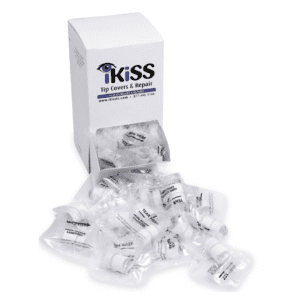
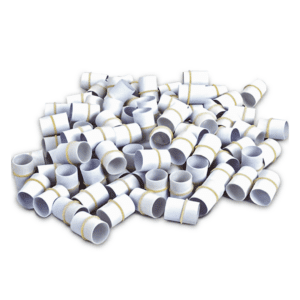
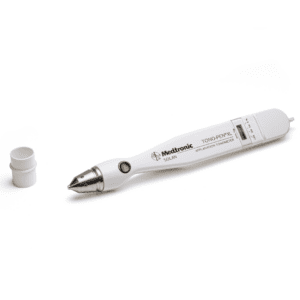
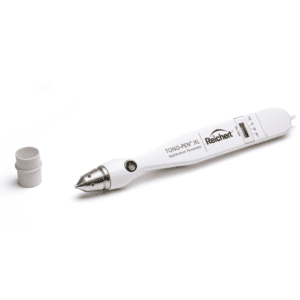
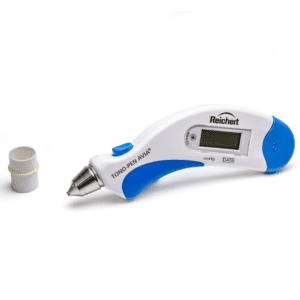
iKiSS is the go-to provider for top-quality refurbished Tono-Pen® Tonometers, Tono-Pen AVIA® Tonometers, Slit Lamps, and Phoropters, offering substantial savings of up to 40%.